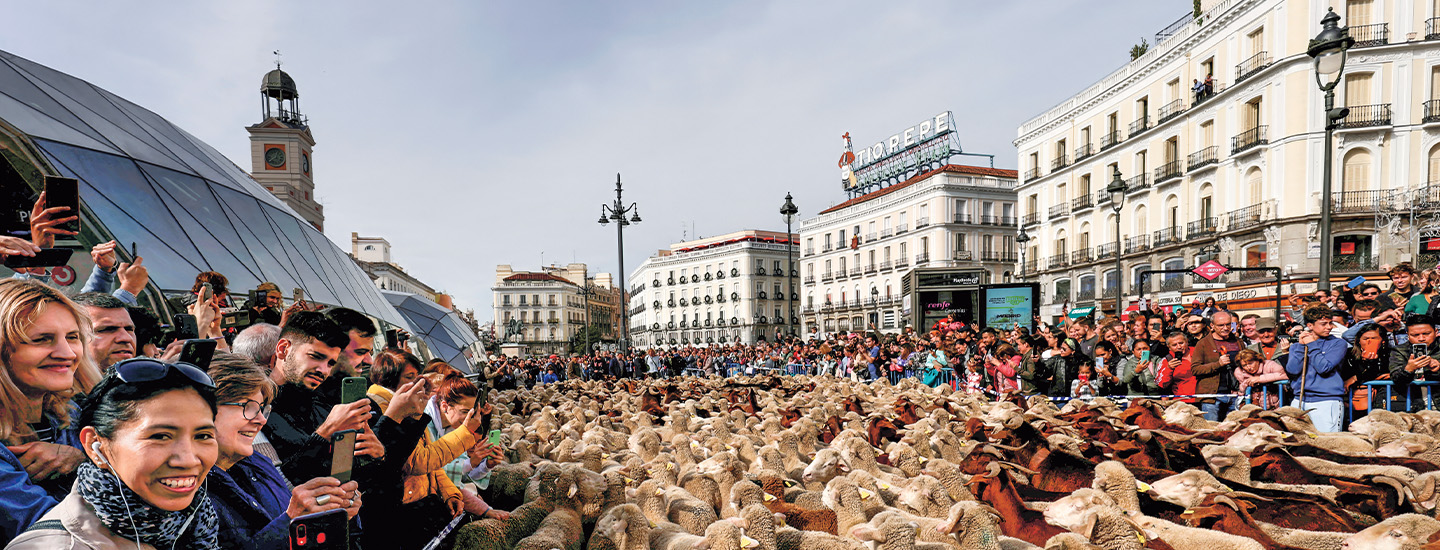Jim McMahon/Mapman®
They’re baa-ack! Every October, the usual big-city bustle of Madrid, Spain, gives way to different sounds. Hooves clatter. Bells clang. Spectators hoot and cheer. That’s because thousands of bleating sheep—along with some goats, cattle, and oxen—parade through the capital city’s streets.
This is Madrid’s Fiesta de la Trashumancia (tras-oo-MAHN-syuh)—Festival of the Migration. Since 1994, the celebration has honored a Spanish tradition that goes back centuries: shepherds moving their flocks from mountain pastures in northern Spain to warmer regions in the country’s south for the winter. The ancient route went through Madrid, which long ago was more country than city.
The modern event is a major party. A group of shepherds leads the way, singing and playing music. Some of them dress in traditional outfits: women wearing long skirts, men in vests and berets, and both decked out in colorful shawls and scarves. Vendors sell food and souvenirs while onlookers snap photos and try to pet the sheep.
“It’s amazing,” a visitor from the Netherlands told a reporter at last year’s festival. “So many people are joining and enjoying it.”
—Kathy Wilmore

